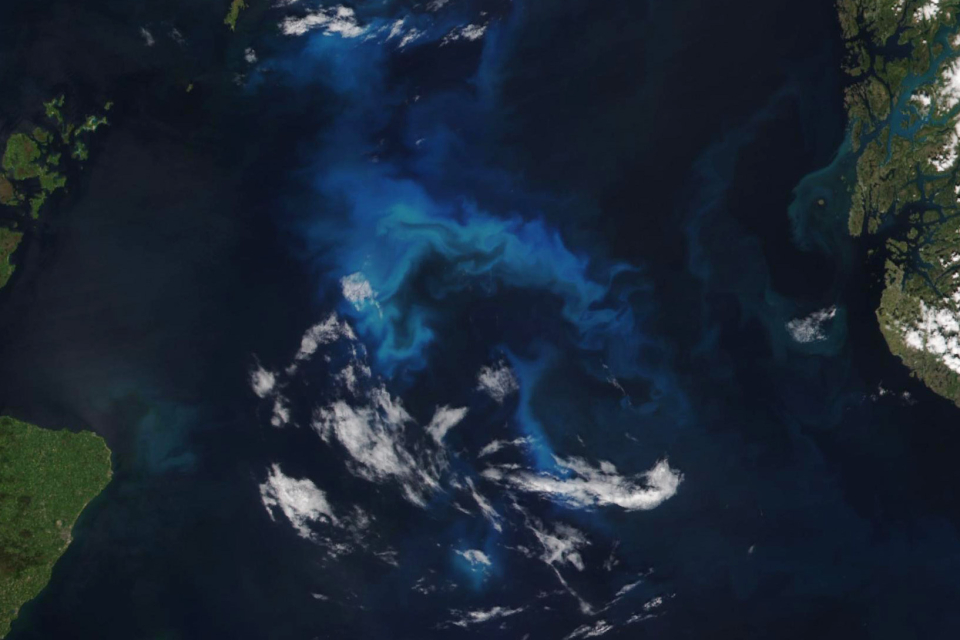Gepubliceerd op 22 juni 2023
Satellites observed hints of the bloom developing between Scotland and Norway for about two weeks, but the view from above was mostly hidden by clouds. Then, mostly clear skies on the afternoon of June 15, 2023, allowed the Visible Infrared Imaging Radiometer Suite (VIIRS) on the NOAA-20 satellite to acquire this natural-color image of the abundant phytoplankton.
Phytoplankton are to the ocean what plants are to land: primary producers, an essential food source for other life, and the main carbon recycler for the marine environment. Diatoms, coccolithophores, algae, and other forms of phytoplankton are floating, plant-like organisms that soak up sunshine, carbon dioxide, and nutrients to create their own energy.

This bloom might contain some diatoms—a type of phytoplankton with silica shells and ample chlorophyll that color the surface waters green. The color of the water, however, indicates that coccolithophores are likely abundant. Coccolithophores have calcium carbonate shells that make the water appear milky blue in satellite imagery, and they typically peak in abundance at these latitudes around the summer solstice.
Phytoplankton are typically most abundant in the North Sea in late spring and early summer when high levels of nutrients are available in the water. Melting sea ice and increased runoff from European rivers—a product of melting snow and spring rains—carry a heavy load of nutrients out to sea. Intense seasonal winds blowing over the relatively shallow sea also cause a lot of mixing that brings nutrients to the surface.
Researchers in Norway studied the patterns and timing of phytoplankton blooms in the North Sea using data from multiple satellite sensors, including VIIRS and NASA’s Moderate Resolution Imaging Spectroradiometer (MODIS). They found that between 2000 and 2020, blooms in this region of the North Sea peaked in mid-to-late April. These blooms lasted, on average, about 46 days. They also found that in the 21-year study period, phytoplankton blooms in the region were starting later in the year and lasting slightly longer. The cause of this delay, however, was not immediately clear.
The composition of phytoplankton blooms near Norway may be changing over time with warmer sea surface temperatures, the researchers noted, but it is difficult to tell the species composition of blooms without taking physical samples. However, a future NASA Plankton, Aerosol, Cloud, ocean Ecosystem (PACE) satellite mission will enable researchers to infer more information about ocean ecology, such as the species of phytoplankton present in blooms and the rates of phytoplankton growth.
Source:
NASA Earth Observatory. (2023, June 22). Phytoplankton Flourish in the North Sea.